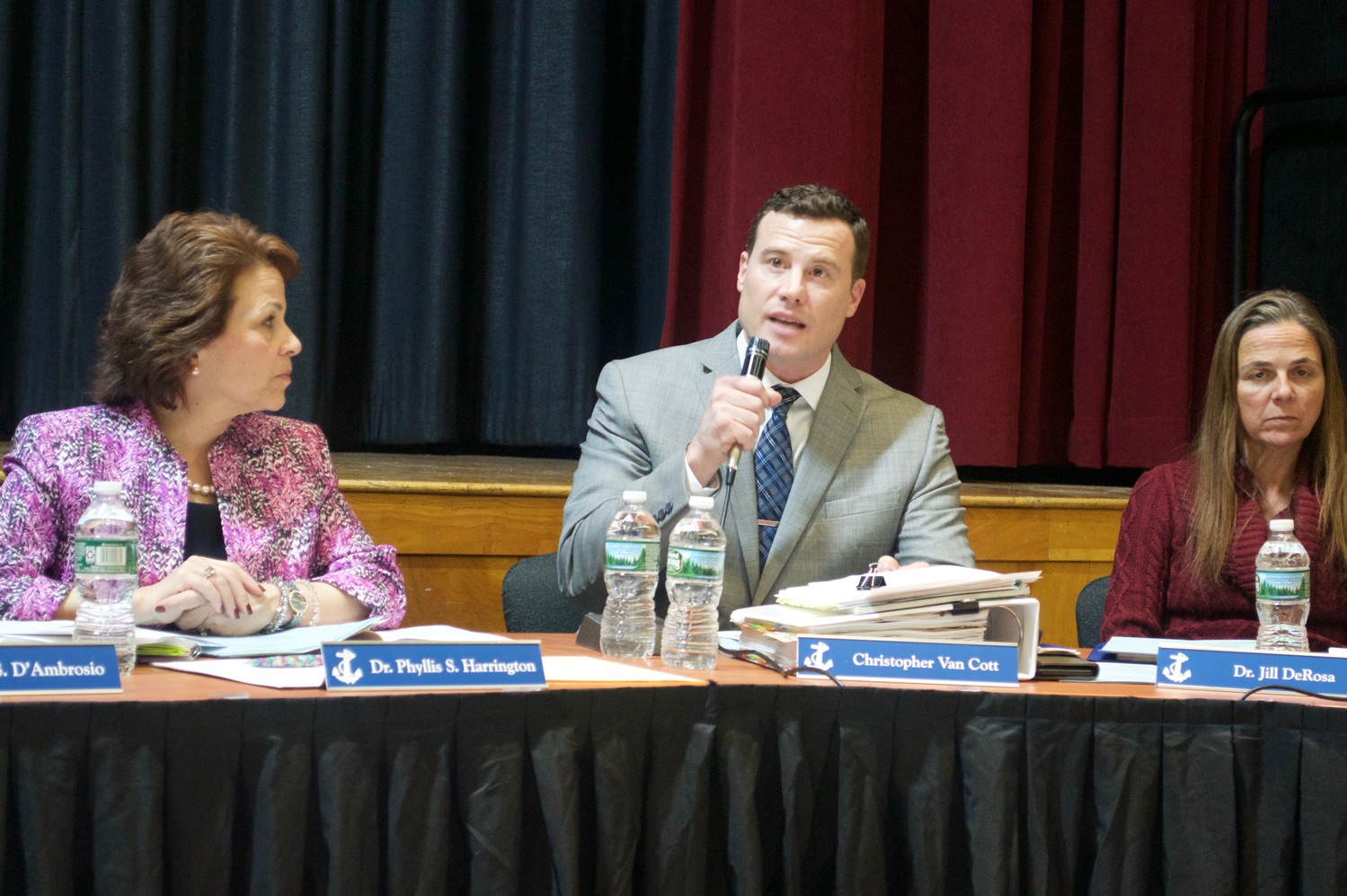Oceanside school district works to close budget gap
In the first of three workshop sessions, the Oceanside School District unveiled the first part of its 2018-19 budget on Feb. 7.
Among the issues highlighted, assistant superintendent of business, Chris Van Cott, said that the board was working to close a $1.5 million budget gap. Through postponing building and infrastructure improvements, he said that it was able to reduce the gap to roughly $1.2 million, but that more action would be required.
Additionally, through a three-year effort to replenish the district’s reserves — depleted after Hurricane Sandy — Van Cott said Oceanside was no longer classified as susceptible to fiscal stress by the state comptroller’s office, allowing it to save over time on bond payments.
The workshop covered the administrative and capital portions of the budget, which include expenditures on staffing, legal fees, debt payments, equipment and supplies, as well as building and grounds maintenance and construction. Salaries, Van Cott said, would be covered in the third workshop on March 21.
Among increases to the budget was a $560,000 hike to pay the interest on bonds totaling $30 million the district borrowed in 2014. It also set aside an additional $400,000 towards a high school musical theatre program space, which would match last year’s contribution. Van Cott said the goal is to complete the renovations at the space for the 2019-20 school year.
Additionally, Van Cott said that $160,000 more will go towards a repair reserve fund earmarked for rehabilitating the Oceanside High School turf field. This is the third year the district has set aside money for this purpose, Van Cott said, and work on the $800,000 project is scheduled for completion during the summer of 2021 or 2022.
Other notable increases in expenditures include an additional $165,000 in contract services for the various transportation companies the district has contracts with. Van Cott added that it is more cost-effective (though less efficient) to “buy seats” on buses and vans shared with other schools than to acquire the vehicles outright. In regards to busing, Van Cott said that while the district saves through sharing vehicles with other districts, it will have to pay an additional $92,000 for bus matrons to ensure special needs students — of which there is an increase — have a caretaker to ride with. It also included $167,000 more for the installation of new technology.
Decreases in the proposed budget include $49,000 less in clerical services, and $50,000 less for tradesmen. It also saved $37,000 in computer data processing through BOCES due to a renegotiated contract as well as an additional $47,000 with the county-run shared education service savings. The district has also decreased the budget for heat fuel by $58,000 because of an ongoing shift from oil to gas due to the installation of new dual fuel boilers. The changeover, however, added $65,000 more in the budget for gas and $19,000 for electricity.
During the workshop, resident Herb Pitkowsky — referring to himself as “Solar Herb” — highlighted the rising costs of electricity and pointed out that something must be done to drive down costs. He suggested the district start investing in solar panels, especially during roof renovations.
Looking forward, Van Cott said that Oceanside is seeking to establish a capital reserve fund for a 10-year term of up to $20 million to fund capital projects and large equipment purchases. Residents, however, must vote to approve establishment of the fund, which is set to appear on the ballot in May. Additionally, further voter approval would be needed for the district to begin using the funds, as well as if any year-end surpluses will go into it. Van Cott said it would help improve fiscal health and reduce the need to borrow through more bonds.
The next budget workshop will be held on Feb. 28, and will cover instruction, special education, athletics & FAPA and technology.






